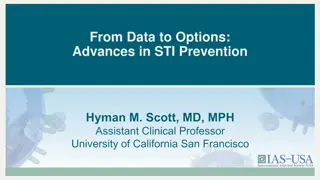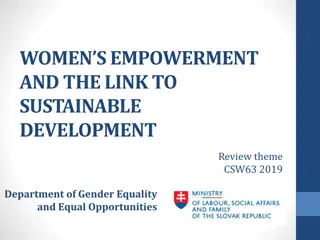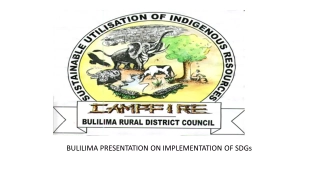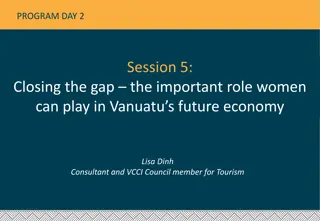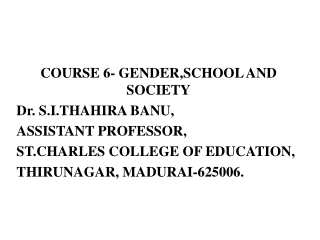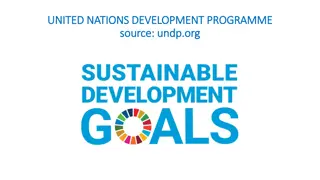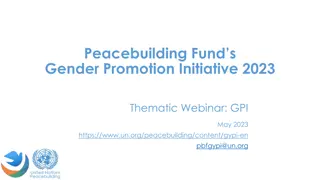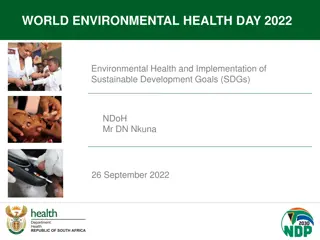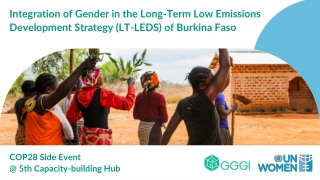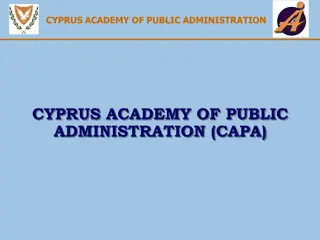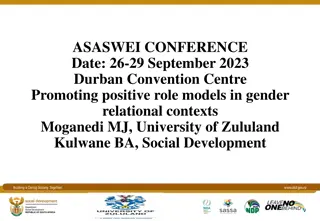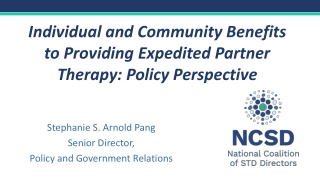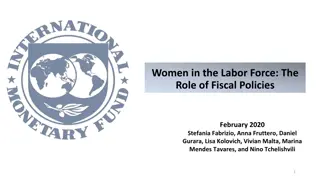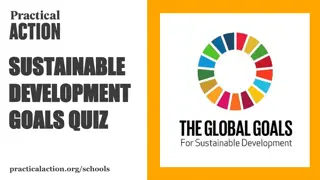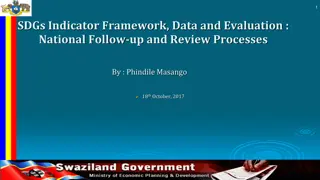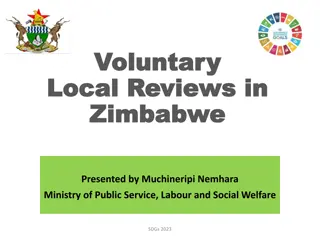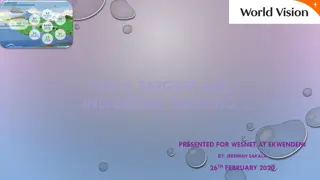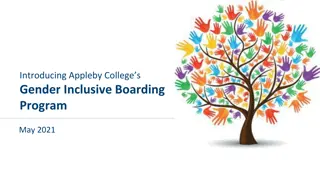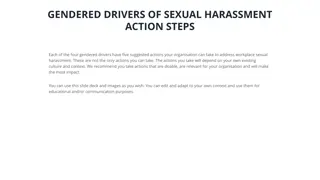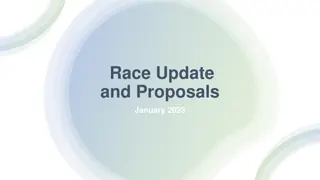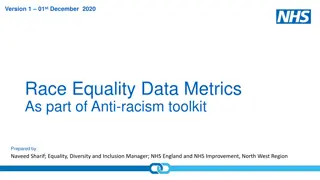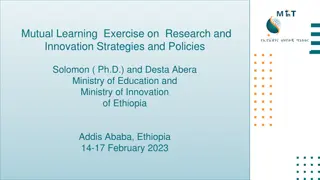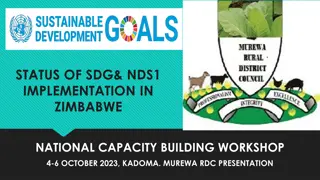Workshop on STI Policy for SDGs and Gender Equality
Approaches to STI policy-making in the context of Sustainable Development Goals (SDGs), with an emphasis on open science and gender equality. It covers the importance of STI in achieving SDGs, interrelationships between goals, building a robust STI system, and the STI policy cycle. Key elements include setting the agenda, policy formulation, evaluation, implementation, and decision-making. The workshop aims to address broad goals such as research, innovation, science education, national development plans, sectorial priorities, legal frameworks, and governance structures.
Download Presentation

Please find below an Image/Link to download the presentation.
The content on the website is provided AS IS for your information and personal use only. It may not be sold, licensed, or shared on other websites without obtaining consent from the author. Download presentation by click this link. If you encounter any issues during the download, it is possible that the publisher has removed the file from their server.
E N D
Presentation Transcript
Training Workshop on Science, Technology and Innovation (STI) Policy and Policy Instruments for Sustainable Development Goals (SDGs) Session 1: Approaches to STI Policy- making in the context of SDGs, with focus on open science and gender equality Presentation: Presentation: Introduction of approaches Introduction of approaches to STI policy for SDGs and gender in STI to STI policy for SDGs and gender in STI Ms Kornelia Tzinova
The Sustainable Development Goals 17 global goals to eradicate poverty, protect the planet and ensure prosperity for all by 2030 PEOPLE Accepted by all countries and apply to all PLANET Everyone has to do their part: governments, the private sector, civil society PROSPERITY PEACE Not legally binding, but governments expected to establish national frameworks for their achievement, monitor and review progress PARTNERSHIP
Interrelationships between Sustainable Development Goals Fuente: David LeBlanc (2015). Towards integration at last? The sustainable development goals as a network of targets. DESA Working Paper No. 141.
STI is systemic STI play a key role in achieving targets across all SDGs Building a Robust STI System requires: National (Regional) STI Systems Variety of institutions and actors Linkages and interactions Varieties of Policies STI Other policies Exchanges and flows Legal Framework
STI Policy Cycle: participatory processes Setting the Agenda of STI Involves actors and institutions in determining problems that require government action both State and societal actors take part Policy Evaluation STI Policy Formulation identifying and assessing possible solutions to policy problems; social actors play key role governments put STI policies into effect : confrontation with reality Implementation of STI Policies STI Decision Making Governments adopt a particular STI course of action or non-action
What a STI Policy might want to address Broad goals: Developing research, innovation, science education National development plans Key sectorial priorities Legal framework Governance framework Organizational structure (Institutions, Private, Public, Universities, non-Profit) Policy instruments Gender and youth STI Policy Capacitybuilding Funding mechanisms Monitoring and Evaluation Regional and international co-operation
Other strategic STI policy issues in the context of SDGs : STI from a national to an international perspective, cooperation Fostering multi-stakeholder partnerships for investments in STI for SDGs Transition to Open Science: Open Access to Data and Knowledge, Open Infrastructures, Citizen Science.. more transparent and accountable to society Science Diplomacy Giving directionality in STI policies towards STI related targets of the SDGs Inclusive STI policies, gender, indigenous knowledge Monitor and measure contribution of STI to SDGs implementation with improved STI indicators STI Policy
The UN The UN- -Inter (IATT ) Guidebook (IATT ) Guidebook Inter- -agency Task Team agency Task Team Framework for developing STI for SDGs roadmaps, a series of six sequential steps
Gender equality in STI for the achievement of SDGs 4.3 by 2030 ensure equal access for all women and men to affordable quality technical, vocational education, including university 9.5 Enhance scientific research, upgrade the technological capabilities of industrial sectors in all countries .., encouraging innovation and substantially increasing the number of research and development workers per 1 million people and public and private research and development spending and tertiary 5.5 ensure women s full and effective participation and equal opportunities for leadership at all levels of decision- making in political, economic, and public life 17.18 enhance capacity building support to developing countries, including for LDCs and SIDS, to increase significantly the availability of high-quality, timely and reliable data disaggregated by income, gender . 8.5 By 2030 achieve full and productive employment and decent work for all women and men, including for young people and persons with disabilities, and equal pay for work of equal value
Women in STI Although there is growing recognition that STI can contribute significantly to promoting development, STI policies generally lack a gender perspective
Towards inclusive STI policy with Towards inclusive STI policy withgender dimension gender dimension National Science, Technology and Innovation Policy 2017-2021 Ghana The chapter 4 establishes that `the Government of Ghana has placed STI at the center of the country s development agenda. [ ] Every effort will be made to achieve gender balance`.
Towards inclusive STI policy Towards inclusive STI policy with withgender dimension gender dimension Revised National Science, Technology, and Innovation Policy (NSTIP) 2020 2030 One of the policy guiding principles considers that a gender and equity sensitive approach has the potential to define appropriate interventions[ ]. . Namibia All STI interventions shall aim to systematically address their concerns through gender and equity analysis and planning. Objective 4: To improve gender equality and mainstreaming in STEM. Strategy 1: Establish and improve programmes that support women s participation in STEM, science careers and as leaders and decision makers. Strategy 2: Support the role of women in innovation systems. Design, develop and implement gender-responsive innovation support programmes
Under-representation of women in STI Lack of data on women in STI can obstruct the design, monitoring and evaluation of the STI policies that aim at gender equality Some international sources for data on women in STI: UNESCO Science Report UNESCO GO-SPIN Platform-women in STEM portal OECD s STIP Compass s gender balance and inclusiveness dashboard. WEF Global Gender Gap Report 22% of professionals in artificial intelligence are women 2% of venture capitals goes to start-ups founded by women
Questions for thoughts How to align STI governance structures to the global SDGs framework? (policy advice, steering and funding, co-ordination, and evaluation and monitoring ) What frameworks for STI are needed for inclusion in decision-making?



